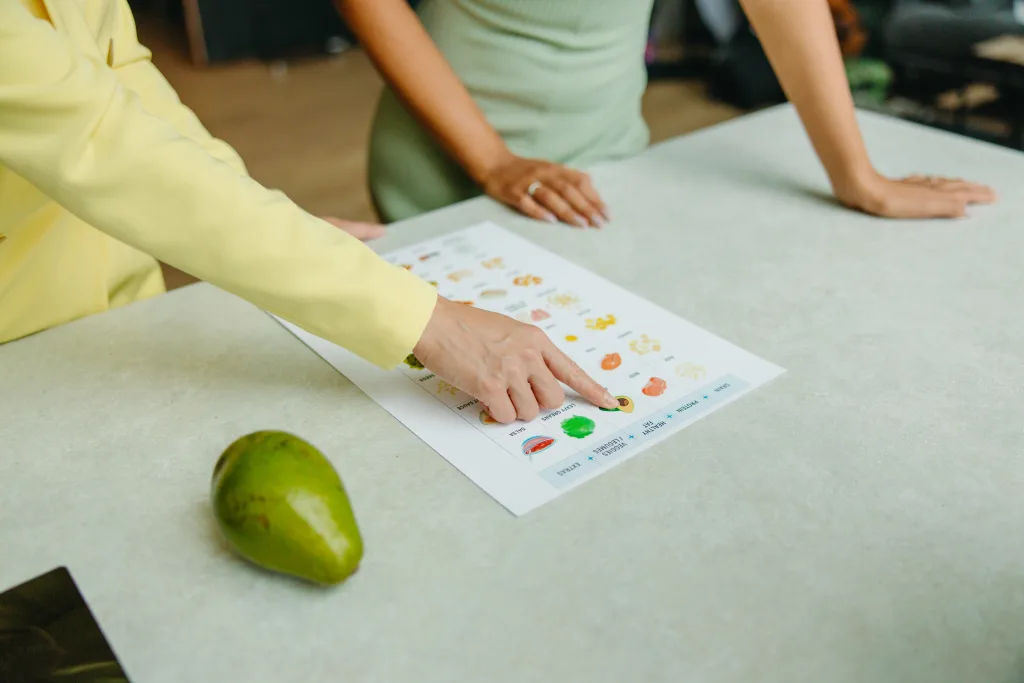Introduction
Losing weight and eating healthy while on a tight budget can feel super challenging. Expensive produce, proteins, and whole grains add up fast, especially when finances feel stretched thin. It’s totally understandable to feel lost about how to make progress managing your weight and overall wellness without breaking the bank.
But don’t get discouraged yet! Stay positive and know that lasting weight loss is possible for anyone committed to making it happen, regardless of budget. This is your journey to feel healthier, more confident, and in control of your diet and finances.
And the good news? Meal prepping is actually your ticket there! When you take time to plan meals and prep food for the entire week ahead, your grocery budget stays in check and you set yourself up for healthy eating success. No more scrambling last minute for overpriced takeout when you meal prep!
In this post, we’ll break down 8 incredibly clever, super simple meal prep strategies anyone can use to lose weight without derailing their budget. Stick with me—healthy and wealthy is the goal!

Step 1: Plan Weekly Meals
Planning out a week of affordable, nutritious meals ahead of time helps keep your grocery budget on track. You buy only what you need for the recipes you plan to make, avoiding impulse purchases and food waste.
Look for recipes using budget-friendly proteins like eggs, beans, Greek yogurt, chicken, or tuna. Incorporate lots of affordable fruits and veggies in season right now. And don’t forget about using up leftovers! Designate a leftover night to get creative. Planning is key.
Here are some important meal planning tips to make the most of this strategy:
- Take inventory of what you already have on hand. No need to repurchase ingredients you already have stocked in your pantry or freezer. Planning around these items helps reduce waste.
- Browse weekly grocery store circulars for sales and deals on versatile ingredients. Plan recipes around what’s on sale each week.
- Pick a day each week to sit down and map out a 7-day meal plan. Sunday works great for many people. Make this a consistent habit.
- Create an organized, detailed shopping list based on each recipe in your meal plan. Stick to buying only what’s on your list!
- Use apps like AnyList or grocery store apps to easily save recurring shopping lists each week. This makes meal planning super simple.
- Find meal plan inspiration from budget-focused sites like BudgetBytes as well as social media feeds of nutritionists and dietitians.
- Mix up breakfasts, lunches, dinners and snacks in your plan. Variety and flexibility ensures you won’t get bored.
Investing 30-60 minutes into weekly meal prep will transform your eating habits and budget. Make it non-negotiable self-care time.

Step 2: Shop Smart
Make a detailed grocery list based on your meal plan. Only buy what’s on your list! Shop for generic brands, compare unit prices, and look for sales. Focus on buying versatile ingredients like whole grains, spices, oils, etc. in bulk when possible.
Buy meat in larger quantities and portion it into freezer bags at home to get the best deals. Purchase produce in season. And look in the frozen aisle for great buys on veggies and fruits. You’ve got this!
Here are more grocery shopping strategies for sticking to your budget:
- Shop store brands and generics – they often cost way less with similar quality. Compare ingredients.
- Bulk bins for whole grains, nuts, etc. are great money-savers. Weigh and portion bulk items at home.
- Check unit prices displayed on shelves to find the best deal. Bigger sizes aren’t always cheaper per ounce.
- Make a list organized by store section to maximize efficiency. Don’t deviate from your list!
- Never grocery shop hungry. Stick to your list and avoid temptation.
- Look up and down shelves for hidden deals tucked on lower and higher shelves.
- Dedicate time each week to meal planning and grocery shopping to set yourself up for success.
- Take advantage of grocery pickup when possible to avoid temptation and impulse buys in store.
- Use cash-back apps like Ibotta to score rebates on items you were buying anyway. Every bit adds up!
- Ask the store butcher or seafood counter if they have any markdowns available.
Staying disciplined at the grocery store prevents blowing your budget. You’ve got this!

Step 3: Cook in Batches
Cooking things like whole grains and proteins in big batches saves you tons of time prepping meals during the week. Use slow cookers, pressure cookers, or just regular large pots to make big batches of rice, quinoa, oats, chicken, etc.
Portion batches out into individual containers for quick, healthy meals in minutes. Homecooked beats takeout any day! Having the right kitchen tools makes batch cooking super simple.
Here are some tips for effortless batch cooking:
- Invest in meal prep containers, muffin tins, and reusable freezer bags for easily portioning out foods.
- Double recipes whenever possible to yield leftovers and meal prep portions. Soups, chilis, and casseroles all work great.
- Cook 2-3 pounds of chicken at once. Shred and freeze portions for quick protein all week.
- Roast a couple pounds of vegetables – broccoli, cauliflower, Brussels sprouts, potatoes, etc. Meal prep staples!
- Make a huge pot of whole grains like brown rice, farro or quinoa. Portion out servings for bowls, salads and sides.
- Whip up a veggie or quinoa salad full of produce. Keeps all week long in the fridge for lunches.
- Hard boil a dozen eggs. Enjoy for breakfasts, snacks, salads or rice bowls.
- Bake oatmeal muffins or healthy breakfast bars for quick breakfasts you can grab and go.
The options for batch cooking healthy, budget meals are endless. Get creative with how you repurpose leftovers too!
Step 4: Control Portions
Carefully measure proper portion sizes of carbs, protein, fats rather than guessing. Use smaller plates, bowls, and containers to prevent portion distortion. Eat slowly and mindfully without distractions. Just take it one bite at a time.
And of course, load up on unlimited fruits and veggies! Volume eating is key when you want to feel full without overdoing calories.
Here are more tips for keeping portions in check:
- Use measuring cups and food scales. Don’t rely on eyeballing portions. Measure carefully until portion sizes become visually familiar.
- Refer to recommended serving sizes on nutrition labels for guidance. Stick within those guidelines for carbs, fats, protein, and dairy.
- Dish out proper portions onto a plate or bowl rather than eating directly out of containers.
- Choose smaller bowls, plates, glasses and utensils to make portions appear bigger. This fools your brain.
- Never eat out of a bag or box. Always portion snacks into containers to avoid overeating.
- Drink water frequently with meals and snacks. It keeps you feeling full.
- Eat protein and fiber-rich foods which satisfy hunger for longer periods of time.
- Put leftovers away before going back for second helpings. Pause and reassess if you’re truly still hungry.
With mindful eating habits and smart portioning tricks, you’ll avoid overeating without feeling deprived.
Step 5: Embrace Leftovers
Getting creative with leftovers saves money and reduces food waste. Soups, salads, omelets, and stir fries are great leftover avenues. Repurpose old veggies for veggie fried rice. Use chicken in wraps or on top of salads. Just get inventive!
Here are budget-friendly ideas for leftover makeovers:
- Soup – purée odds and ends into yummy blended soups. Broccoli, cauliflower and carrot make a nice combo.
- Salad – leftover chicken, grains, veggies and beans reinvent nicely as main or side salads.
- Veggie fried rice – day old rice and veggies turn into fast fried rice. Add egg too.
- Flatbread pizzas – use naan, pitas or tortillas as the crust topped with veggies, cheese, etc.
- Breakfast – veggies, beans, meats reinvent nicely as breakfast bowls, burritos or omelets.
- Casseroles – combine leftover meats, veggies, grains and cheese into quick no-recipe casseroles.
- Smoothies – overripe banana and sad berries blend up into nourishing smoothies. Add yogurt or milk.
- Stir frys – quickly sauté leftover rice, veggies, proteins into a salty-sweet stir fry.
- Snacks – leftover chicken, veggies and grains make perfect snacks paired with hummus or nut butter.
Let your creativity guide you to use up leftovers in budget-friendly ways with minimal waste!
Step 6: Freeze Meals
Freezing cooked meals allows you to prep food in advance using bulk deals on meat and produce. Portion cooked meals into reusable containers or bags before freezing. Thaw in the fridge overnight or in cold water. So easy!
Use these freezing tips and strategies:
- Allow cooked foods to cool completely before freezing to prevent excess moisture from freezing.
- Portion soup, grains, casseroles, etc. into reusable containers leaving 1-inch headspace. Seal tightly.
- Use freezer bags for meats, fruits, breads, etc. Remove air and seal tightly. Flatten to freeze evenly.
- Label everything clearly with contents and freeze dates using masking tape and a sharpie.
- Frozen meats up to 3 months, prepared meals up to 2-3 months for best quality.
- Freeze fruit for smoothies – bananas, berries, pineapple, mango. Great money saver.
- Bread and tortillas freeze exceptionally well. Always have backups handy.
- Chop and freeze fresh herbs in olive oil for instant flavor all winter long.
- Portion out bulk meals into single servings to pull for quick lunches and dinners later.
Take full advantage of your freezer real estate to reduce food waste and always have healthy meals ready to enjoy!
Step 7: Snack Smart
Ditch expensive packaged snacks and satisfy cravings with simple homemade snacks instead. Make your own trail mix, roasted chickpeas, apple slices with peanut butter, energy bites, or popcorn.
When buying packaged snacks, compare prices and go for healthier bulk options. Snacking prep can happen during meal prep too.
Here are more ideas for wallet-friendly DIY snacks:
- Homemade granola or protein bars – make big batches for grab and go snacks.
- Fresh fruits and veggies with hummus, salsa or nut butter for dipping.
- Apple slices with peanut or almond butter.
- Homemade kale chips sprinkled with parmesan cheese and sea salt.
- Energy balls made from oats, nut butter, flax, dried fruit, and honey or maple syrup.
- Cottage cheese or Greek yogurt with fruit mixed in.
- Hard boiled eggs – cook a bunch at once for snacks all week.
- DIY snack bags – portion out cracker and nut mixes into small bags.
- Banana pops – spread nut butter on peeled, halved bananas and freeze.
- Edamame sprinkled with sea salt.
Homemade snacks keep your wallet happy and your tastebuds excited. Get creative with ingredients you have on hand!

Step 8: Stay Focused on Your Meal Prep for Weight Loss
Sticking with a healthy eating plan takes commitment and patience with yourself above all. But a few other tricks help too. Tell friends and family about your goals for accountability. Join an online community of others striving for health and wellness.
And remember to track your progress however works for you whether it’s a simple food journal or an app. Consistency is key!
Here are some final tips for staying focused on your healthy eating and weight loss goals:
- Talk to your partner, friend or family member about your goals and ask for their support in sticking with your meal plan and healthy habits. Accountability is motivating.
- Connect with others working towards similar goals through online communities. Share tips, ideas and encouragement to stay on track.
- Consider working with a dietitian or nutritionist, even virtually, for expert guidance tailored to your needs and goals. An objective professional can help formulate an effective plan.
- Identify your triggers like stress, exhaustion, or boredom that derail your best intentions. Develop strategies to push past them.
- Set SMART goals – specific, measurable, attainable, relevant and timely. This gives you incremental steps vs. a vague end goal.
- Celebrate small victories like sticking to your meal prep schedule, trying new recipes, etc. Pat yourself on the back!
- Keep an organized meal plan and grocery list visible on your fridge or bulletin board to easily follow.
- Use apps like MyFitnessPal or Lose It to easily track daily food, water intake and exercise. Connect with friends on them!
Consistency is vital on your healthy eating journey. Implement little tricks like these to stay focused. You’ve got this!
Meal prepping is the ultimate budget-friendly route to weight loss success and better health. Use these simple tips to take control of your fitness and finances at the same time. Healthy and wealthy can absolutely be your reality! I’m rooting for you.
Thank you for reading this post, don't forget to subscribe to our free newsletter
!

